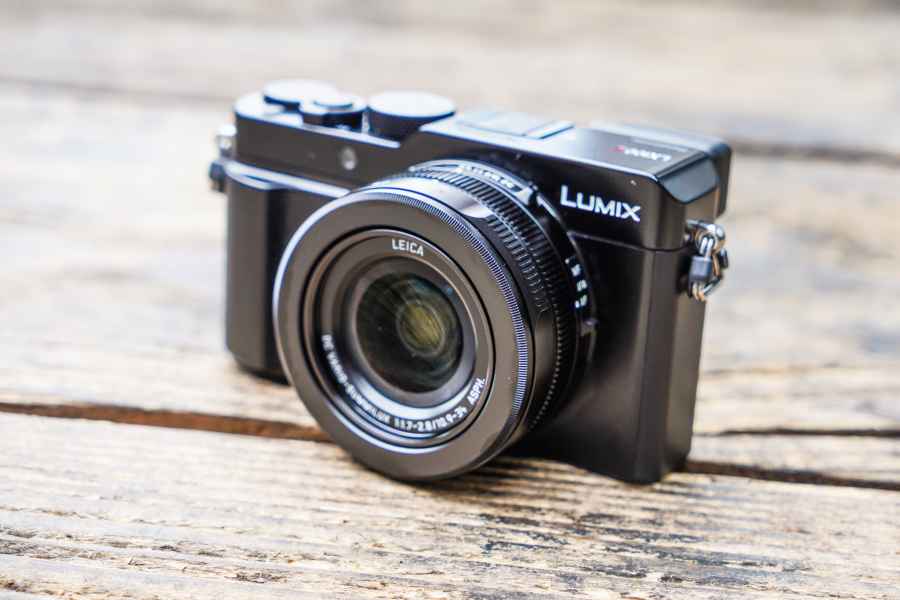Panasonic Lumix LX100 II review: Hands-on first look
At a glance:
- 17-million-pixel multi-aspect Four Thirds sensor
- 24-75mm equivalent lens, f/1.7-2.8
- ISO 200-25,600 (expandable to ISO 100)
- 60secs-1/4000sec shutter speed (1sec-1/16,000sec with electronic shutter)
- 3in, 1,240k-dot touchscreen
- 0.38in, 2,764k-dot electronic viewfinder
- Bluetooth enabled
- 340-shot battery life
- £849
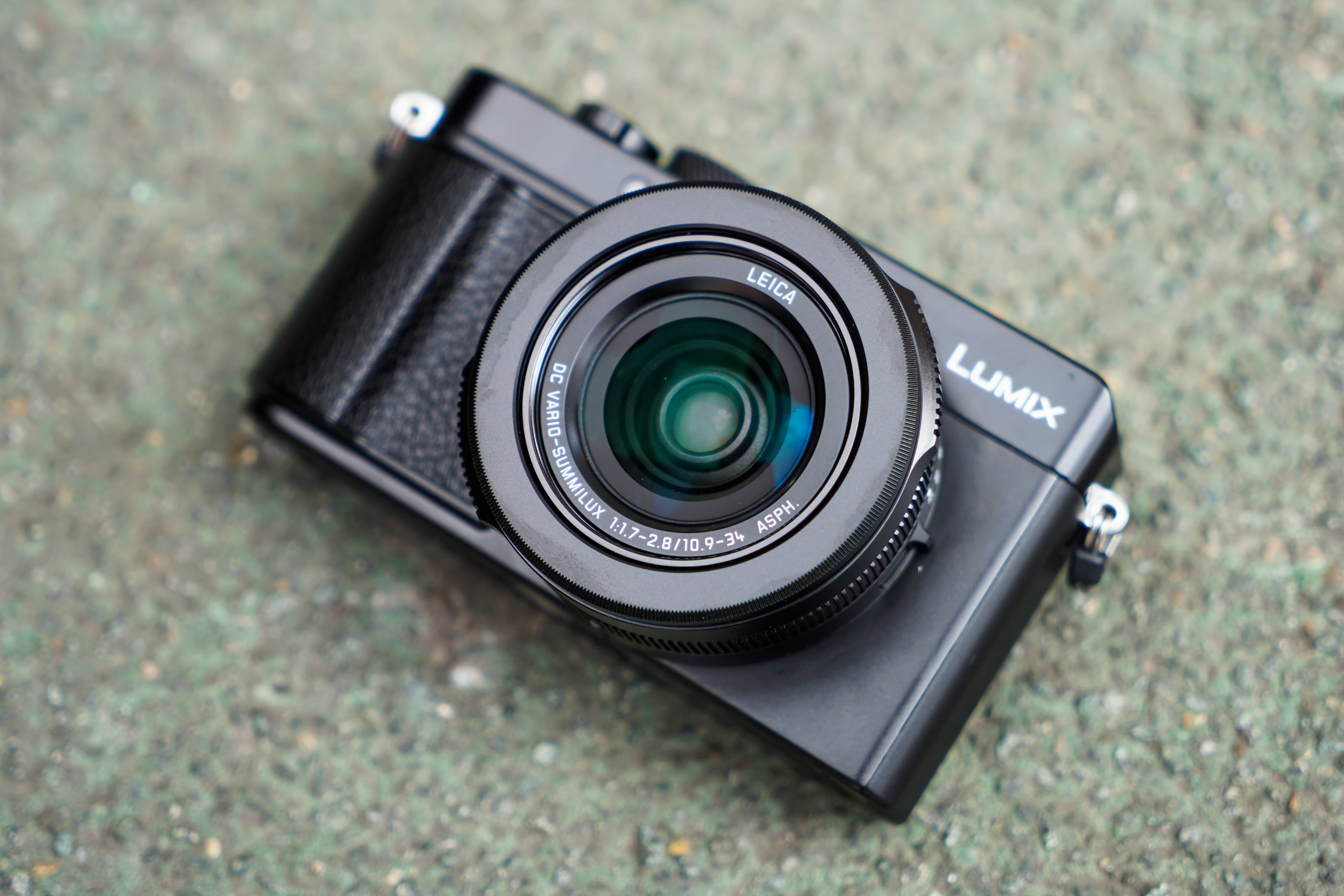
The Lumix LX100 II inherits the same lens as featured on the Lumix LX100
Panasonic has released some excellent new models into its G-series mirrorless lineup in the last couple of years. What’s hard to believe is that almost four years have passed since the manufacturer refreshed its LX series with a large sensor, premium compact geared towards keen enthusiasts. There has been rumour that a new Lumix LX100 model might be on the cards and this has recently arrived in the guise of the Lumix LX100 II. This new addition to the LX range is not a direct replacement for the LX100 however, which we’re told will continue to be sold.
Now in its seventh generation, the LX series has become popular with photographers who’d like a featured-packed compact camera with an impressive specification and excellent manual control. The new Panasonic Lumix LX100 II, just like its predecessor, combines a fast zoom lens and four thirds sensor in a stylish body with enthusiast-friendly controls and a built-in viewfinder. The Lumix LX100 II may look almost identical to the Lumix LX100, but behind its fixed lens some important changes have been made to bring it up to date.
As well as boasting a new multi-aspect Four Thirds sensor with an effective resolution of 17 million pixels, the LX100 II provides a high resolution touchscreen and supports USB charging. Although it’s a relatively minor update on the LX100, there are other improvements, all of which are revealed below.
Features
The main talking point on the new Lumix LX100 II is its new sensor. It’s a case of out with the 16.84-million-pixel four thirds MOS sensor of old and in with a new 21.77-megapixel MOS sensor that should see it offer better image quality, especially at high ISOs. The important thing to note here is that the LX100 II doesn’t actually use the entire sensor area at any given time, but instead has a multi-aspect ratio design that offers 16:9, 3:2 and 4:3 formats (there’s also a 1:1 setting that’s a crop of 4:3).
The effective resolution is 17 million pixels in 4:3 crop, and the sensor does away with an optical low pass filter, which should see it render slightly sharper, more detailed images at the possible expense of image artefacts such as false colour moiré and maze-like aliasing. The sensitivity range covers ISO 200-25,600 as standard, with an extended ISO 100 option also available.
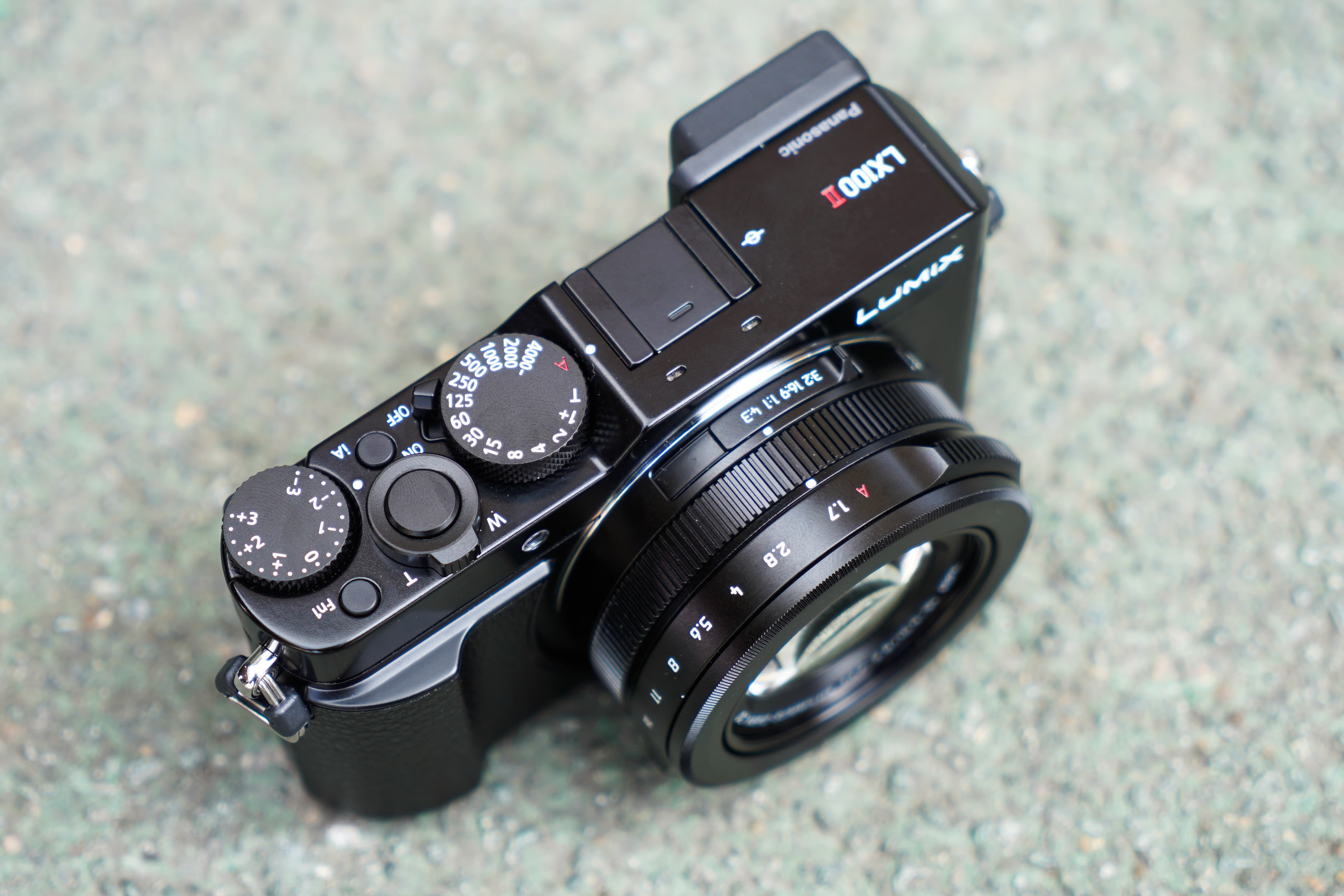
The maximum f/1.7 aperture is limited to the wide-end of the LX100 II’s zoom range
One of the key strengths of the LX100 was its fixed zoom lens. The LX100 II adopts the same Leica DC Vario-Summlux 24-75mm equivalent zoom with an impressive f/1.7-2.8 maximum aperture. Just like the LX100, the optical construction of the lens comprises 11 elements in 8 groups, including 2 ED lenses and 5 aspherical lenses with 8 aspherical surfaces.
The lens enables macro shots to be captured from as close as 3cm (wide) and 30cm (tele), and thanks to Panasonic’s clever hybrid electronic and mechanical shutter system, which enables speeds up to 1/16,000sec, wide apertures can be used in bright sunlight.
To counteract any handshake that may occur when using the camera handheld in low-light or with slow shutter speeds, Panasonic has also equipped the LX100 II with its effective Power O.I.S. (Optical Image Stabiliser). When we tested the LX100 back in 2014, we found this enabled us to shoot sharp handheld shots as low as 1/2 sec at its widest zoom setting.
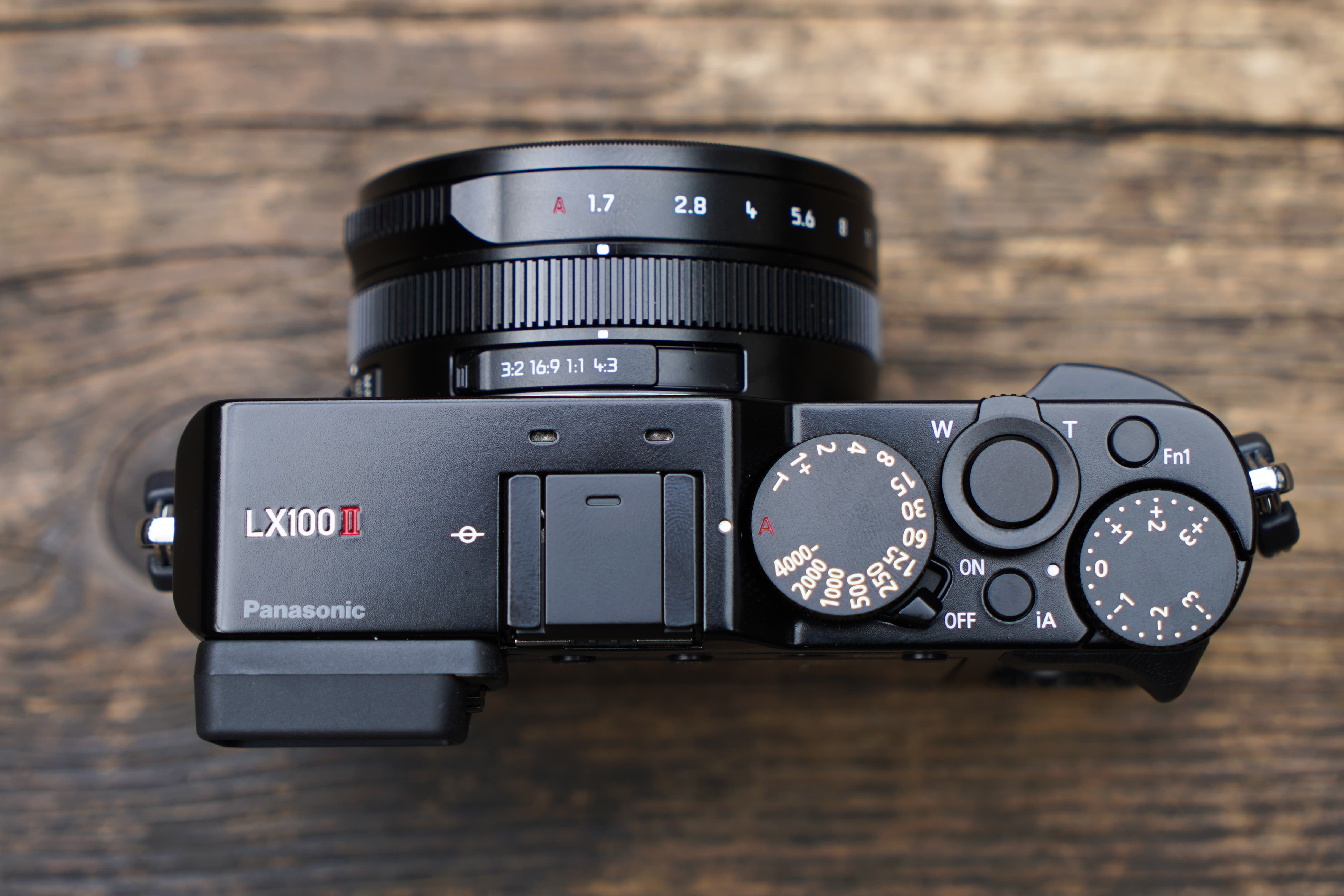
Dials for shutter speed and exposure compensation are clearly visible in this overhead view
At the rear of the Lumix LX100 II you’ll find there’s a corner-mounted 0.38in, 2,764k-dot electronic viewfinder offering a 100% field of view and 0.7x magnification. This is the same as you’ll find on the LX100 and is the fixed type so don’t expect it to tilt like the electronic viewfinder on the Panasonic’s Lumix GX9. Importantly, the EVF features an eye sensor and also supports the eye sensor AF function, which automatically starts focusing when you look into the viewfinder.
So what else is new on the LX100 II? Significant improvements have been made to the rear LCD screen, which features improved resolution (1,240k-dots as opposed to 921k-dots) and is now the touch screen type. Whereas before on the LX100 you couldn’t use the screen to readjust the focus point, navigate the screen or swipe through images in playback, all of these functions are now possible on the Lumix LX100 II.
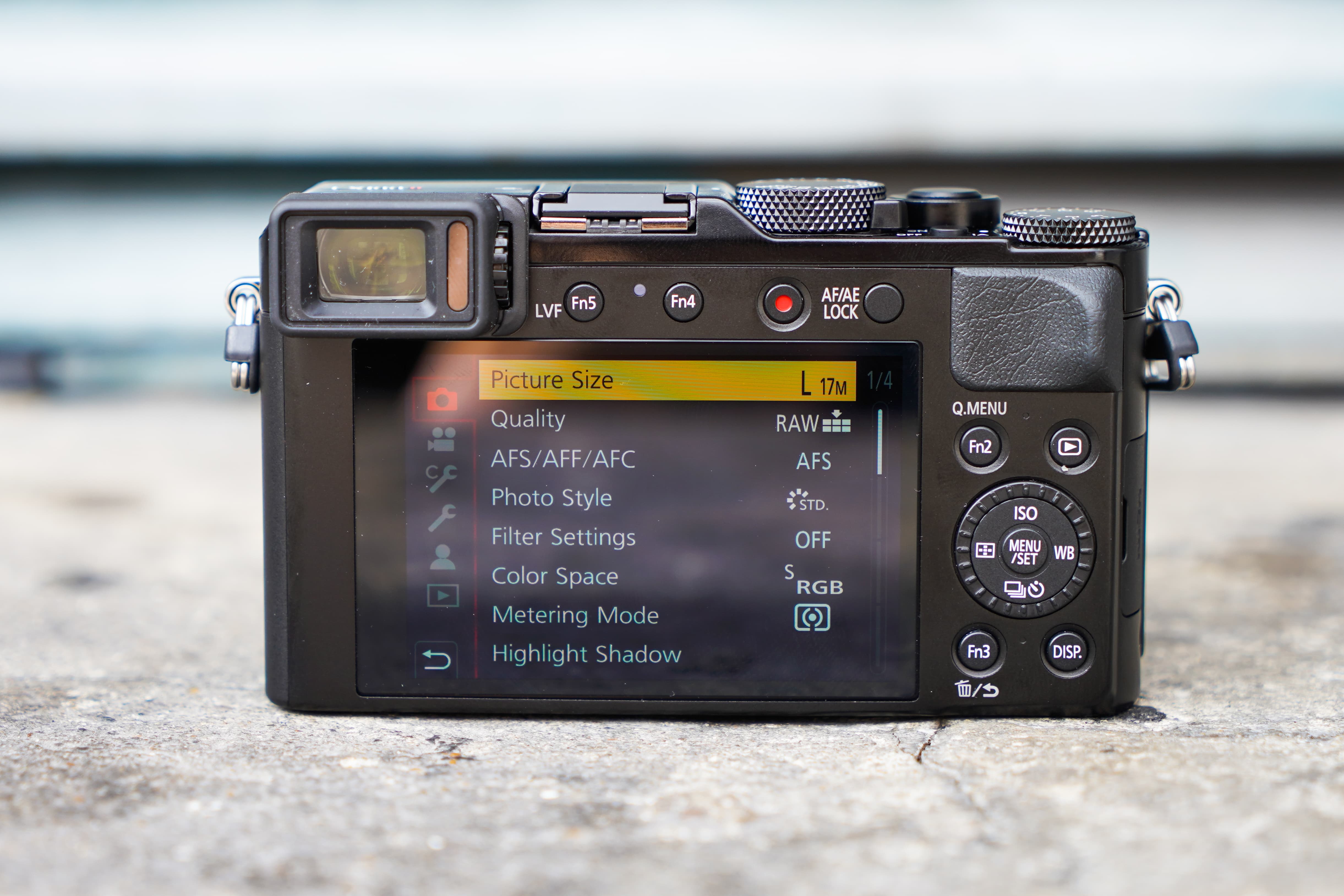
The layout of buttons at the rear of the Lumix LX100 II will be familiar to Lumix LX100 users
The screen has the same fast response that we’re used to seeing on Panasonic’s latest cameras and is a joy to use when navigating the menu and changing settings from the quick menu. The only downside to the screen is that it doesn’t tilt and remains fixed, which makes taking shots from low or high angles somewhat more challenging than some of its rivals in the large sensor compact camera market, most notably the Canon PowerShot G7 X Mark II (£539) and Sony Cybershot RX100 VI (£1,149).
In terms of operational speed, the LX100 II can acquire focus as quickly as 0.10 sec, and as we’re used to seeing on Lumix models, is aided by Panasonic’s DFD (depth from defocus) technology. With regard to continuous shooting, the LX100 can rattle out a burst at 11fps in AFS focus mode, or 5.5fps when it’s set to AFC.
Another perk of the LX100 II is the option to charge the camera on the go via USB. This will be well received by those who use the LX100 II on their travels and don’t have regular access to mains power but are happy to carry additional power in the form of a power bank. To tie in with this USB charging, Panasonic is offering a Goal Zero 7,800mAh weatherproof USB power bank with every LX100 II pre-ordered before the 1st October. On a full battery charge users can expect to shoot 340 shots using the rear screen or 320 shots using the electronic viewfinder.
As already briefly mentioned, the LX100 II inherits the 4K Photo modes we’ve seen on Lumix cameras for a while now. What these modes essentially allow you to do is extract 8-megapixel stills from 4K footage recorded at 30fps. You can choose from three photo functions (4K burst shooting, 4K burst (Start/Stop) and 4K Pre-burst), which are all designed to make it easier to capture an image at the perfect moment.
New additions to the 4K photo functionality include an Auto Marking function, which enables quicker jumping to the most appropriate frame; and Sequence Composition, which is capable of merging selected frames to create a composite effect. Like you’ll find on other Lumix cameras, Post Focus and Focus Stacking functions are also added to the LX100 II.
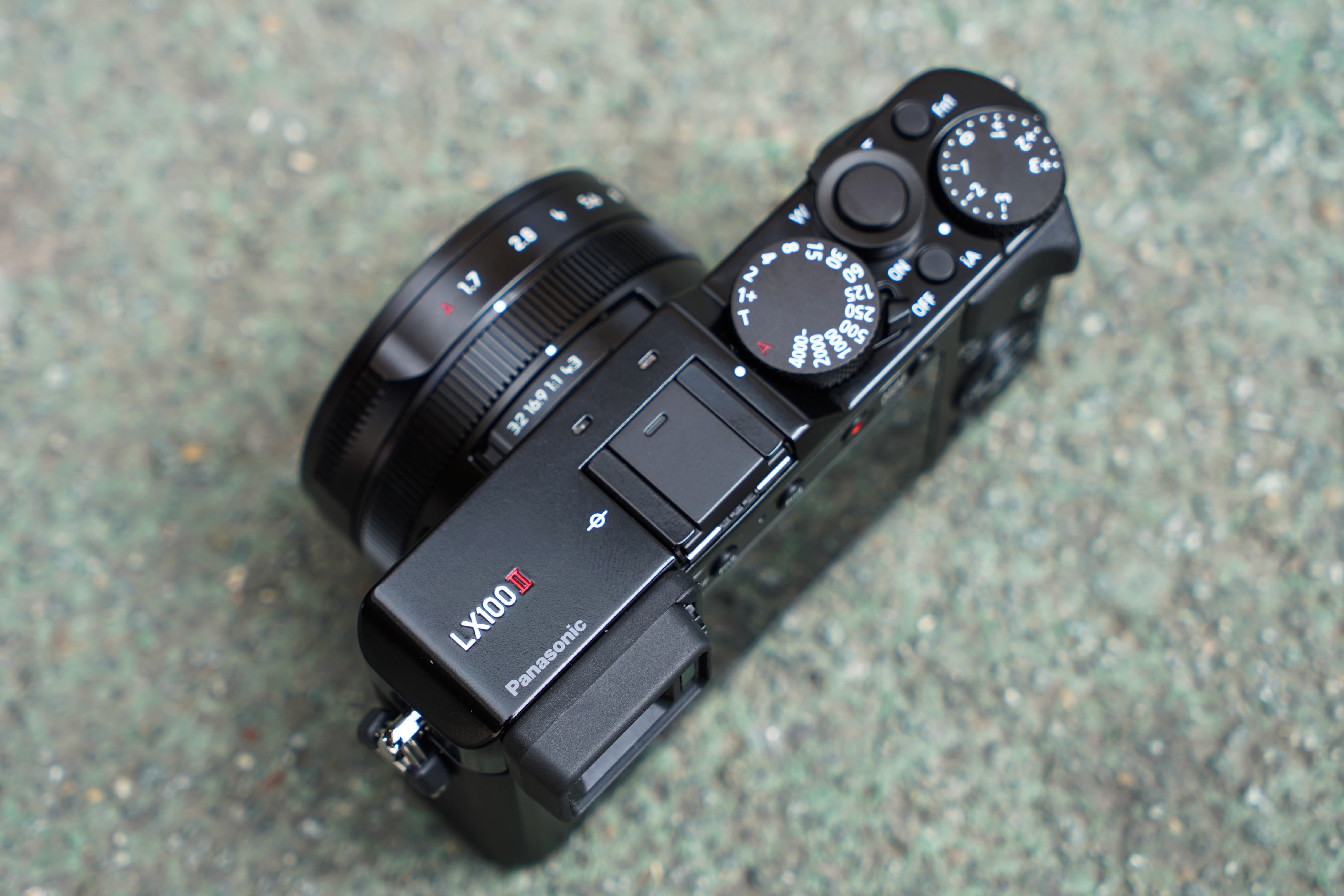
Note the new mark II numbering on the corner of the Lumix LX100 II’s top plate
Other new features on the LX100 II include the integration of Bluetooth and Wi-Fi connectivity for quick and easy image sharing. The beauty of Bluetooth of course is that it’s less power hungry. The low energy compatibility means a constant connection can be maintained with minimum power consumption.
Lastly, Panasonic has also added its L.Monochrome D mode to the monochrome Picture Styles options, which is designed to create more dynamic black and white images that emphasise the highlights and shadows in a scene.
Design and handling
Panasonic has taken the ‘if it ain’t broke don’t fix it’ approach to the design and handling of the Lumix LX100 II. The camera is virtually identical to the LX100 in terms of its build quality and appearance. The only things you’re likely to notice are the newly engraved mark II up on the corner of the top plate and that the letter L has been removed from the front bottom right corner. One area of the camera that Panasonic say they’ve refined is the texture of the artificial leather grip, but to me it feels much the same in the hand as the LX100.
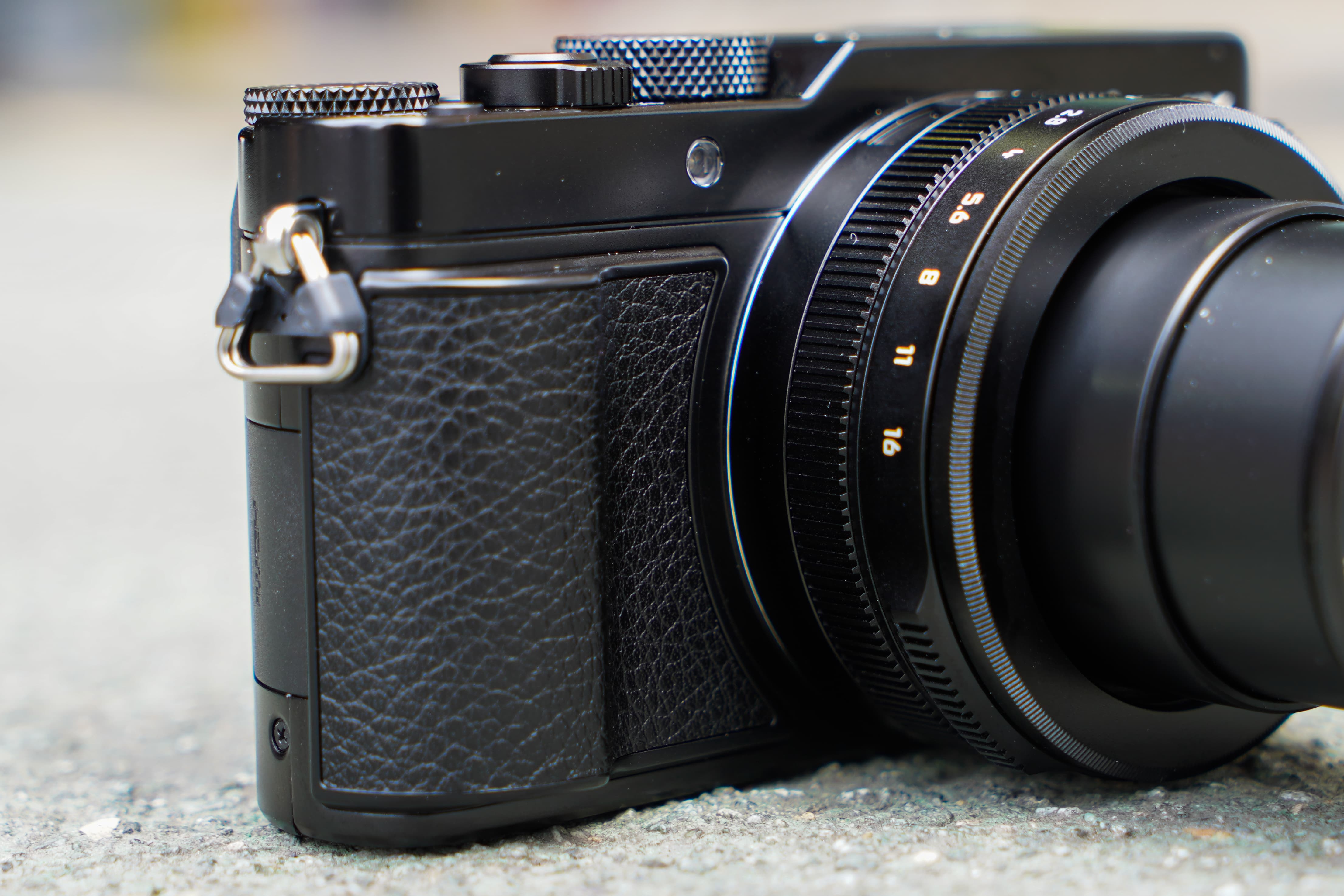
The texture of the artificial leather grip has changed slightly from the Lumix LX100
The quality of the construction is excellent, with most of the body and controls crafted from metal. It feels solid and well put together, without being too heavy. The aperture ring has a lovely feel when it’s twisted and the manual focus ring is nicely weighted for fine focusing adjustments. On the subject of manual focusing, MF assist can now be operated up to 20x compared to 10x on the Lumix LX100.
It must be said that the LX100 II isn’t as small as Sony RX100 models or Canon’s PowerShot G7 X Mark II. If you’re wearing loose fitting trousers you might just be able to squeeze it in your pocket, but if you’re wearing anything tighter you’ll have a struggle. The LX100 II fits far better in coat or jacket pockets, which are usually that bit more spacious.

The LX100 II’s lens makes it a tight fit in most trouser pockets
Photographers who want to take manual control will enjoy the LX100’s dedicated dials for shutter speed, aperture and exposure compensation. The exposure compensation dial offers direct control across a +/-3EV range, but +/-5EV control is available from the menu if required. Having direct access to an aspect ratio switch just behind the manual focus ring saves you having to head into the menu and the iA button just beside the On/Off switch is useful if you want to jump straight into the cameras auto mode with no fuss.
The touchscreen has a big say on how well the camera operates. Moving the AF point around the frame using the screen is very precise and I found shifting the AF point with my thumb on the screen when my eye was raised to the EVF worked very well.
Many of the controls are user configurable, including five external Fn buttons and five GUI buttons. In addition, 23 frequently-used functions can be registered in the My Menu, from among photo shooting functions, video shooting functions and playback functions.
The main menu is well laid out and clear, so it’s not too difficult to find your way around the camera and set it up as you’d like it. Thanks to the addition of the touch screen, I found the LX100 II is just that little bit faster to setup and control than the LX100.

The touchscreen is useful for navigating the main menu and quick menu settings
First Impressions
We were very fond of the Lumix LX100 when we reviewed it four years ago and with the Lumix LX100 II, Panasonic has made a great camera even better. Spending a few hours shooting with a pre-production sample around the streets of Shoreditch in London, confirmed that it’ll be a great companion for street photographers, but I can also see it being a hit with photographers who’d like to own a second camera for travelling, which is less hasslesome than carrying a mirrorless camera or DSLR and a selection of lenses.

AP’s Michael Topham tries out the Lumix LX100 II prior to its official release
I found the lens range is a little on the short side for portraiture and I did get the sense the electronic viewfinder still has room for improvement, but it’s great to see the screen implementing Panasonic’s excellent touch functionality and Bluetooth connectivity.
There are compact cameras out there that’ll fit more easily into your trouser pocket than the Lumix LX100 II, but the advantage it has over the one-inch type sensors you’ll find in cameras like the Canon G1 X Mark II and Sony RX100 VI is that its four thirds sensor is 1.6x larger. The LX100 II should perform well and deliver impressive image quality, especially when challenged in low light. I’m looking forward to running some comparisons directly against the LX100 when our review sample arrives to illustrate the differences.
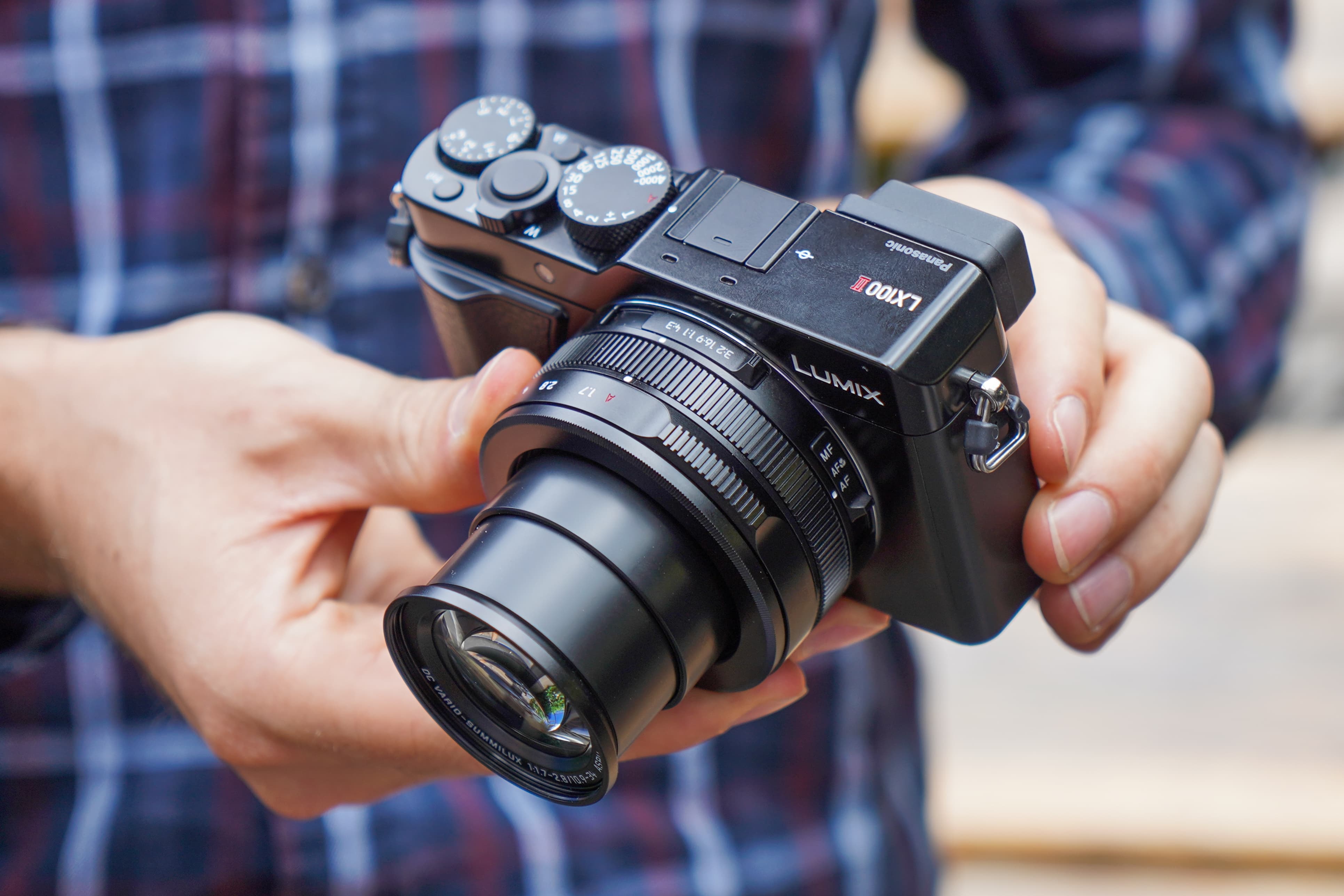
The Lumix LX100 II is built around the same body as the Lumix LX100
The Panasonic Lumix LX100 II is a fairly minor update on the LX100, hence it’s mark II model name. It’s unlikely to persuade many existing LX100 users into upgrading, however my initial impression is that it’s one of the best large sensor compacts out there for enthusiasts who’d like to own a seriously capable fixed-lens camera that’s not cumbersome and pleasing to pull from your hip or jacket pocket when a photo opportunity arises. Watch this space for our full review.

